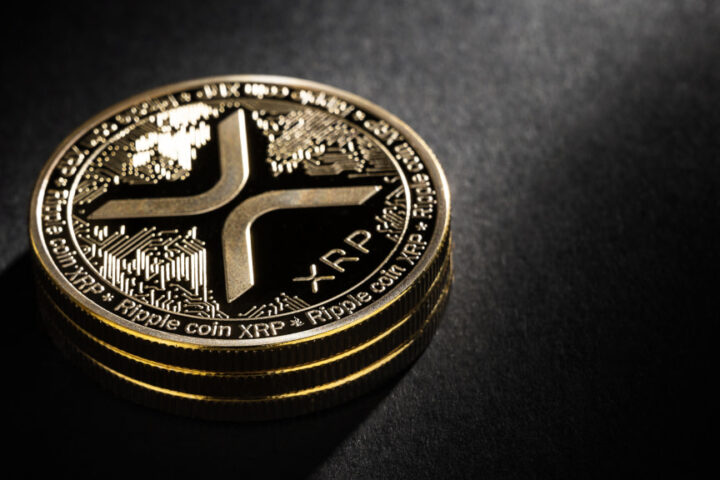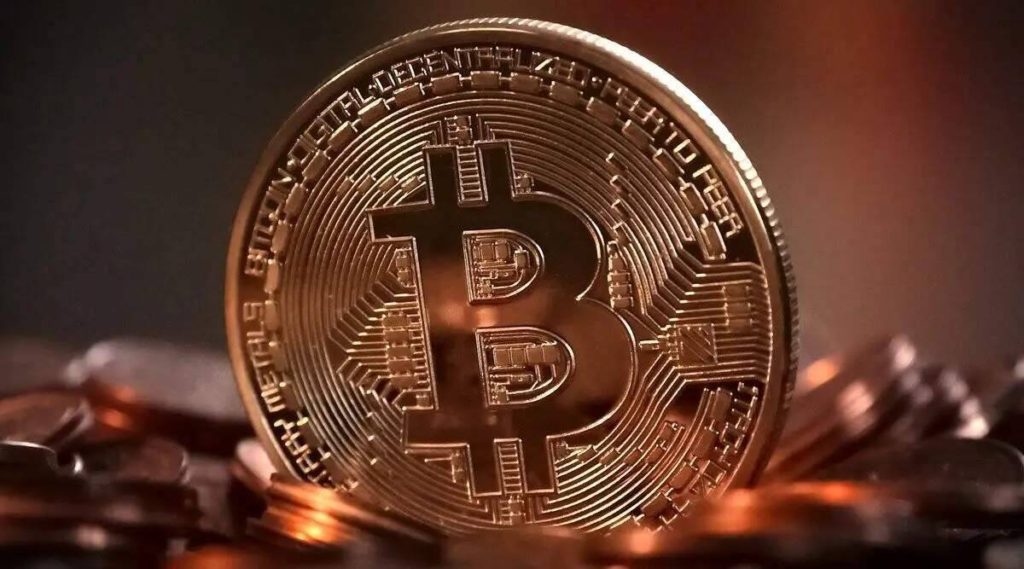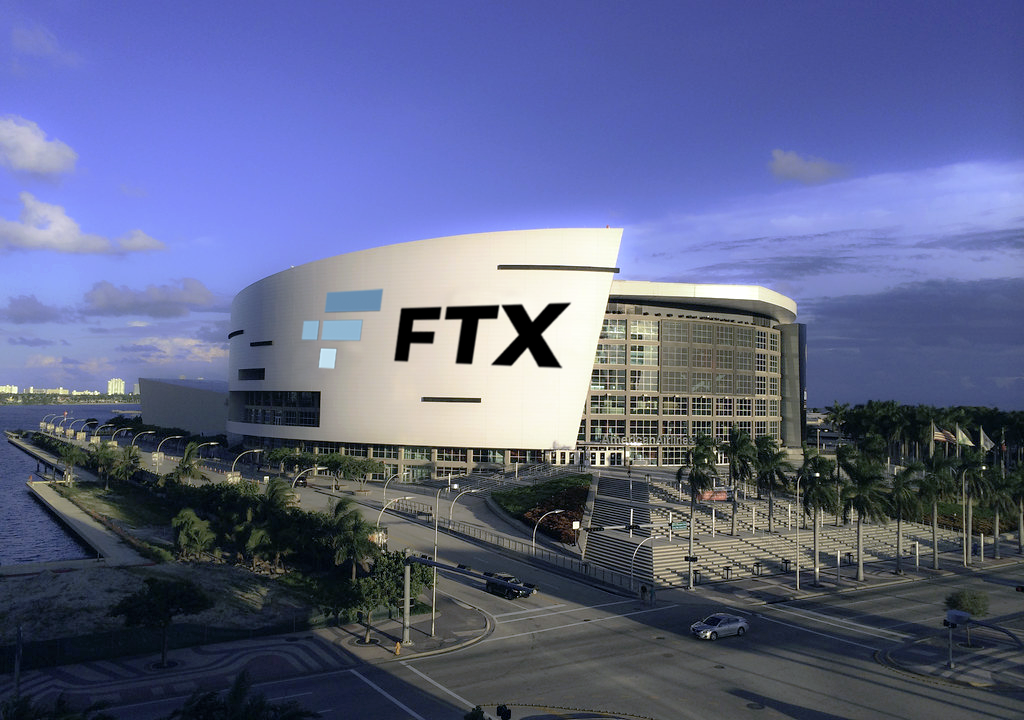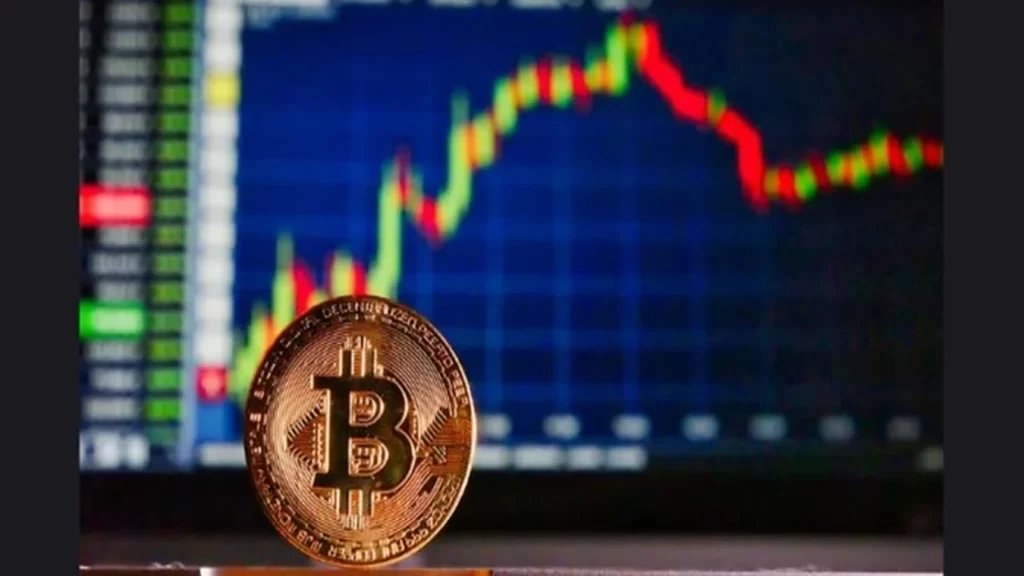WikiLeaks co-founder Julian Assange is free after a 14-year battle against extradition to the United States.
In a final effort to secure his freedom, an anonymous Bitcoiner donated over 8 Bitcoin, worth around $500,000, to help Assange’s family pay off the debt incurred by his travel and settlement expenses.
On June 24, Assange was released from the high-security Belmarsh prison in the United Kingdom after reaching a plea agreement with U.S. authorities.
Shortly after his release, he departed the U.K. on a private plane from a London airport to Saipan in the Northern Mariana Islands, a U.S. territory.
Assange appeared in a district court in Saipan on June 26, where he pleaded guilty to one charge of breaching the U.S. Espionage Act by leaking classified documents.
The journey was planned to prevent Assange from touching foot on American soil.
In an interview, Stella Assange, Assange’s wife, stated that “freedom comes at a cost.”
Assange is required to pay $520,000 to the Australian government for the “forced” chartering of flight VJ199 to travel to Saipan and Australia.
Stella started a crowdfunding page to help the jailed founder with his debts after his return home to Australia.
The donation link was posted by Stella Assange on June 25, and within 10 hours, an anonymous Bitcoiner paid over 8 Bitcoin to the fund, almost clearing the goal of $520,000.
READ MORE: TON Blockchain Faces Rising Phishing Threats Amid Explosive 2024 Growth, Experts Warn
He has also received over 300,000 British pounds ($380,000) in fiat donations so far.
The single Bitcoin donation was the largest donation to the fund, more than all other donations in all currencies combined.
As a result, Assange will arrive in Australia debt free.
At Assange’s court appearance on June 26, Judge Ramona Manglona sentenced him to five years and two months in prison for pleading guilty to espionage charges.
However, Assange has already served the exact amount of prison time in the United Kingdom while fighting extradition.
As a result, he walked from the courtroom a free man.
Assange then took a private flight and arrived in Canberra, Australia, at 9:39 am UTC.
Assange argued that the Espionage Act, under which he was charged, conflicted with First Amendment rights in the U.S. Constitution.
However, he acknowledged that encouraging sources to provide classified information for publication could be illegal.
As part of the plea deal, he was required to destroy all classified information provided to WikiLeaks.
To submit a crypto press release (PR), send an email to sales@cryptointelligence.co.uk.
Outflows from United States spot Bitcoin exchange-traded funds (ETFs) have surged to $1.3 billion over the past two weeks, correlating with a decline in Bitcoin’s price.
Data from Farside Investors shows that Bitcoin ETFs saw a total outflow of $1.298 billion, with Grayscale experiencing the highest outflow of $517.3 million during this period.
In contrast, BlackRock’s Bitcoin ETF was the only one to report positive inflows, attracting $43.1 million over the same timeframe.
Bitcoin’s price has dropped 11.6%, from $69,476 on June 10 to $61,359, according to TradingView data.
This recent trend of outflows is the worst since April, when Bitcoin ETFs recorded net outflows of over $1.2 billion from April 24 to early May.
Jonathan de Wet, chief investment officer at digital asset trading firm ZeroCap, shared with Cointelegraph that the broader crypto market is still struggling.
He predicts Bitcoin’s price may drop to its “key support” level of around $57,000 in the coming weeks due to Mt. Gox creditor repayments.
“BTC and ETH are actually holding up surprisingly well given the rest of the market, with key support at 63,000 and 3,400 respectively, and still clearly within the price range over the past few months,” de Wet said.
Concerns about further downward pressure have been echoed by many market analysts.
READ MORE: Bitcoin and Ether Transaction Fees Plunge Amidst Crypto Market Turmoil
They point to Bitcoin sales by the German government and the nearly $9 billion in BTC from Mt. Gox creditor repayments expected in July as major contributing factors.
De Wet believes that while Bitcoin and other cryptocurrencies might face additional declines in the short term due to these repayments, the long-term outlook remains positive.
“Medium to long-term we are constructive given the ETH ETF launch expected easing bias toward the end of 2024 […] before actual easing in 2025.”
However, some analysts argue that the impact of Mt. Gox creditor repayments may not be as severe as anticipated.
eToro market analyst Farhan Badami told Cointelegraph that Bitcoin often prices in significant market events ahead of time.
He expects Bitcoin’s price to stabilize and potentially rally to new all-time highs in the coming months. “Within the next few weeks, it’s possible we will be range-bound between $60-70K USD,” Badami said.
To submit a crypto press release (PR), send an email to sales@cryptointelligence.co.uk.
FTX has been granted court approval to survey its creditors on whether they prefer to receive their recovered funds in cash under the current liquidation plan or in crypto at its current market value.
On June 25, Judge John Dorsey of the United States Bankruptcy Court for the District of Delaware approved FTX’s plan to gather this feedback.
Several FTX creditors have voiced displeasure with the company’s liquidation plan proposed in May.
The plan suggested a 118% return for 98% of the creditors — those with claims under $50,000 — based on the U.S. dollar value of asset prices at the time of FTX’s bankruptcy filing in November 2022.
Many creditors are advocating for payouts in crypto, taking into account the crypto market’s 165% increase in total market cap since the exchange’s collapse.
For context, Bitcoin was trading around $16,900 when FTX declared bankruptcy but has since soared 265% to $61,770 at the time of publication.
FTX’s lawyer, Andy Dietderich, explained the vote aims to gather feedback from the broader base of FTX customers who have not been involved in the repayment negotiations so far.
FTX lawyers emphasized that bankruptcy laws mandate the firm to value claims as of FTX’s Chapter 11 filing, which aligns with its proposed plan.
They also noted that the cash repayment plan would be simpler to execute as it would avoid capital gains tax implications for creditors.
READ MORE: Metaplanet to Issue 1 Billion Yen in Bonds to Buy Bitcoin Amidst Soaring Stock Prices
It is important to note that even if creditors favor in-kind crypto repayments, the court is not obligated to approve them.
Creditors have until Aug. 16 to vote on the plan, and Judge Dorsey will decide on its approval on Oct. 7.
FTX has recovered $11.4 billion in cash since its bankruptcy filing, with expectations to reach $12.6 billion by Oct. 31, when FTX’s Chapter 11 plan could take effect.
FTX was one of the world’s largest cryptocurrency exchanges before its collapse in November 2022.
Around $8 billion in customer funds were misappropriated, largely by FTX’s trading firm Alameda Research, leading to a liquidity crisis when customers attempted to withdraw their assets.
The exchange is now led by John Ray, a turnaround specialist, who is managing the bankruptcy case.
Former CEO Sam Bankman-Fried was convicted of multiple fraud and money laundering charges in November 2023 and sentenced to 25 years in prison in March.
To submit a crypto press release (PR), send an email to sales@cryptointelligence.co.uk.
Crypto losses due to deep fake scams are projected to surpass $25 billion in 2024, more than doubling last year’s losses, according to Bitget Research.
In a June 27 report, Bitget noted a 245% increase in deep fakes worldwide, based on earlier Sumsub research data.
The report identified China, Germany, Ukraine, the United States, Vietnam, and the United Kingdom as having the highest occurrences of deep fakes in the first quarter of 2024.
The crypto industry alone saw a 217% increase in deep fake incidents compared to Q1 2023.
Bitget reported that the rise in deep fakes led to $6.3 billion in crypto losses in the first quarter, with expectations of losses reaching $10 billion per quarter by 2025.
“Deepfakes are moving into the crypto sector in force, and there is little we can do to stop them without proper education and awareness,” Bitget CEO Gracy Chen told Cointelegraph.
Interestingly, deep fake fraudsters have not significantly changed their tactics over the years.
Most crypto losses occur through fake projects, phishing attacks, and Ponzi schemes, using deep fake technology to gain the trust of cryptocurrency investors.
These methods have accounted for more than half of all deep fake-related crypto losses over the past two years.
READ MORE: DFX Labs Nears Full Operational License in Hong Kong Amid Regulatory Push for Global Crypto Startups
“By impersonating influential figures, these schemes create the illusion of credibility and substantial project capitalization, thereby receiving large investments from victims without thorough due diligence,” said Bitget Research.
MicroStrategy executive chairman Michael Saylor has been a frequent target for fraudsters.
In January, Saylor mentioned his team removes around 80 AI-generated fake videos of him daily, typically promoting Bitcoin-related scams.
Bitget also noted the use of deep fakes in cyber extortion, identity fraud, and market manipulation, though these represent a smaller share of crypto scams.
For example, a fake statement from an influencer might be used to manipulate token prices.
Bitget predicts that without effective measures, deep fakes could be used in 70% of crypto crimes by 2026.
“Criminals are increasingly employing fake photos, videos, and audio to exert a stronger influence over their victims,” Bitget Research chief analyst Ryan Lee told Cointelegraph.
Lee highlighted concerns over AI-backed voice impersonators and deep fakes that circumvent Know Your Customer (KYC) measures to access user funds.
He emphasized the importance of “Proof of Life” features in KYC systems to prevent such fraud.
To submit a crypto press release (PR), send an email to sales@cryptointelligence.co.uk.
A cryptocurrency wallet labeled by the German Government (BKA) has sold over $54 million worth of Bitcoin.
On June 25, the wallet executed three transactions, offloading a total of 900 Bitcoin. The first transaction, involving 200 BTC, was sent to the Coinbase exchange, while the second, also of 200 BTC, was directed to the Kraken exchange.
The third transaction, amounting to 500 BTC, worth over $30 million, was sent to an unknown wallet labeled “139Po,” as reported by Arkham Intelligence.
Although the identity of wallet “139Po” remains a mystery, it has previously interacted with the German government’s wallet.
On June 20, 800 BTC were transferred to “139Po,” following a 500 BTC transfer on June 19.
After the latest transactions, the German government-labeled wallet still holds 46,359 Bitcoin, according to Arkham Intelligence.
There are concerns that the German government’s actions might impact Bitcoin’s price, potentially pushing it below the $60,000 mark.
The wallet currently holds over $2.8 billion worth of Bitcoin, which could exert significant selling pressure.
Bitcoin’s price has been on a downtrend, dropping 11% over the past month and more than 7% in the past week, hovering just above $61,000 as of 9:40 am UTC, according to Bitstamp data.
Popular analyst Willy Woo suggests that Bitcoin might undergo a correction lasting up to four weeks before resuming its price rally.
READ MORE: TON Blockchain Faces Rising Phishing Threats Amid Explosive 2024 Growth, Experts Warn
In a June 22 post on X to his 1.1 million followers, he wrote: “Eyeballing this model… probably 1-4 weeks more of cooling down before #Bitcoin price action is sufficiently boring. Chart: Intensity of speculators playing casino games.”
On June 19, suspicions about potential Bitcoin selling were sparked when the government-labeled wallet transferred 6,500 BTC, valued at over $425 million.
The majority of Bitcoin from the government’s wallet is being sent to centralized exchanges, indicating potential sales.
Prior to these transfers, the wallet held nearly 50,000 BTC since February 2024, believed to be seized from the operator of the pirated movie website Movie2k.
Further selling pressure could arise in July, as the collapsed cryptocurrency exchange Mt. Gox announced it would start repaying its users.
Mt. Gox creditors, owed over $9.4 billion worth of Bitcoin, have been waiting more than ten years to recover their funds, which could add significant pressure on Bitcoin’s price.
To submit a crypto press release (PR), send an email to sales@cryptointelligence.co.uk.
Memecoins have broken free from a week-long bearish trend in the crypto market, recording impressive double-digit growth over the past 24 hours.
While Bitcoin has been struggling to build bullish momentum, hitting a monthly low of $58,554 on June 24, most memecoins have experienced a trend reversal, showing significant gains.
Before this recent uptick, memecoins were among the biggest losers in the declining crypto market.
DOGECOIN followed the broader market trend, achieving a 2.4% price increase in the past 24 hours.
In contrast, Shiba Inu saw minimal progress with only a 0.15% gain on the daily chart.
The most significant beneficiaries of the bullish surge are newer memecoins that have emerged in recent months.
Solana-based Popcat (POPCAT) saw a remarkable 50% surge on the 24-hour chart, while Mog Coin (MOG) experienced a 39% price increase.
READ MORE: Bitcoin and Ether Transaction Fees Plunge Amidst Crypto Market Turmoil
This recent rise in memecoin prices has not only reversed the market trend but also brought memecoins back into the spotlight after many predicted the end of the meme token frenzy following the recent dip.
Dogwifhat (WIF), a memecoin that made headlines earlier in 2024 after reaching a $4 billion market cap, fell to $1.47 earlier this week, marking a multi-month low.
However, on June 25, the memecoin surged over 25%, recovering the majority of its losses from the past week.
The token’s price rose from a daily low of $1.47 to a daily high of $1.94, trading at around $1.83 at the time of writing.
In addition to WIF, Pepe was another major memecoin in the top 50 crypto rankings by market capitalization to post double-digit growth in the past 24 hours.
PEPE’s price increased from a daily low of $0.00001028 to a daily high of $0.00001198, reflecting a 13% surge over the past 24 hours.
Floki (FLOKI), another popular memecoin this season, recorded an 11% growth, while Bonk (BONK) saw a 16% surge.
To submit a crypto press release (PR), send an email to sales@cryptointelligence.co.uk.
King Pepe (KINGPEPE), a new Solana memecoin that was launched today, is poised to explode over 12,000% in price in the coming days.
Currently, King Pepe can only be purchased via Solana decentralized exchanges, like Jupiter and Raydium, and early investors stand to make huge returns in the coming days.
Early investors in SHIB and DOGE made astronomical returns, and King Pepe could become the next viral memecoin.
In fact, many early Shiba Inu and Dogecoin investors have been pouring funds into this new Solana memecoin.
King Pepe launched with over $3,000 of locked liquidity, giving it a unique advantage over the majority of other new memecoins, and early investors could make huge gains.
To buy King Pepe on Raydium or Jupiter ahead of the KuCoin listing, users need to connect their Solflare, MetaMask or Phantom wallet, and swap Solana for King Pepe by entering its contract address – CM4bhHDSiPTYxmsVSetnARhH9tQtcbMrMDcfq58dkJTF – in the receiving field.
In fact, early investors could make returns similar to those who invested in Shiba Inu (SHIB) and Dogecoin (DOGE) before these memecoins went viral and exploded in price.
If this happens, a new wave of memecoin millionaires could be created in a matter of weeks – or potentially even sooner.
The Solana memecoin craze continues amid larger memecoins, like Shiba Inu (SHIB), Dogecoin (DOGE) and DogWifHat (WIF) trading sideways in recent weeks and losing momentum.
This is why many SHIB, DOGE and WIF investors are instead investing in new Solana memecoins, like KINGPEPE.
Think of a world where you’re not just a gamer but also an owner, with real control over your virtual assets. That’s what non-fungible tokens (NFTs) are bringing to the world of online casinos.
In this decentralised universe, you can bet using NFTs, own virtual assets, and win while playing your favourite crypto live casino games. Learn how they work with this guide:
What are NFTs?
NFTs are virtual assets that are unique and cannot be replaced. They are stored on the blockchain which is a digital ledger that keeps track of all the transactions and ownership. When you buy an NFT, you get a certificate that shows you are the official owner of that virtual item.
Crypto users buy NFTs for various reasons. It could be a way to collect unique virtual art or to show off ownership of something rare and valuable. Some see them as investments hoping that NFTs will increase in value over time.
How are NFTs integrated into crypto casinos?
Due to their convenience and unique features, NFTs have become more popular in crypto casinos. Here are some of the ways they are being used:
- NFT-powered games → Many crypto casinos are creating NFT-based games where the game assets, like virtual items or characters, are represented as NFTs. You can buy, collect, trade, or use these NFT assets within the casino’s games.
- NFT rewards and prizes → Some crypto casinos offer NFTs as rewards or prizes for certain games or tournaments. You can win unique NFT collectables or in-game items that hold value outside the casino site.
- NFT betting and staking → Certain crypto casinos allow you to bet using NFTs on the game outcomes or sports events. The NFTs act as your wager and winning means you will receive the staked NFTs as your payout.
- NFT marketplaces → Some crypto casinos are building their own NFT marketplaces. This allows you to buy, sell, or trade the NFTs you’ve earned or acquired by playing games at the online crypto casino.
Benefits of using NFTs in crypto casinos
Using NFTs in the best crypto casino sites offers a variety of benefits you can maximise. Such as:
- Scarcity and ownership → NFTs provide scarcity and ownership of in-game assets, such as unique in-game items or characters. This creates a sense of uniqueness and value in your virtual assets.
- Enhanced player experience → NFTs can be used to create unique, collectable in-game items that you can trade, sell, or use within the crypto casino. This makes gaming more engaging and immersive.
- Transparent transactions → The blockchain-based nature of NFTs provides a transparent and auditable record of all transactions. This builds trust and transparency within the crypto casino.
Factors to consider when using NFTs in crypto casinos
Consider the following factors to take advantage of your NFTs to the fullest:
- Value → Consider the value of the NFTs you plan to use. More valuable NFTs have higher staking limits or provide better rewards in the crypto casino.
- Utility → Look for NFTs with useful in-game features that can give you an advantage in the casino games. This boosts your chances of winning and makes your gaming more worthwhile.
- Security → Ensure the casino has strong security measures to protect your NFTs from theft or loss. Don’t forget to read the crypto casino’s policies and procedures for NFT recovery in case of any issues.
- Fees → Consider the fees that come with using NFTs in the crypto casino, such as transaction fees or staking fees. Compare fees across different casinos to find the most cost-effective option.
Using NFTs is a great way to enhance your gaming experience. However, it’s important to consider factors like value and fees that come with the NFTs you want to use. Research and assess whether they suit your preferences.
Tokyo-based investment and consulting firm Metaplanet plans to issue 1 billion yen ($6.26 million) in bonds to raise funds for buying Bitcoin.
The firm’s board approved this move, stating that the Bitcoin will be held for the long term. Additionally, a separate notice mentioned that the bonds would offer an annual interest rate of 0.5%.
On Monday, Metaplanet’s shares rose by 11.5%, reaching 96 yen ($0.60). This increase continues the stock’s impressive over 500% gain so far this year, according to Google Finance.
In contrast, Bitcoin has recently hit a 40-day low, dropping 2.6% in the past day to $62,733 after nearing $72,000 in early June, according to CoinGecko data.
If Metaplanet were to purchase 1 billion yen worth of Bitcoin at current prices, they would acquire nearly 100 BTC, approximately 99.84 BTC.
READ MORE: Softbank CEO Predicts AI Will Be 10,000 Times Smarter Than Humans by 2035
This planned acquisition will add to Metaplanet’s existing crypto holdings, which reached 141.07 BTC after the firm bought 23.25 BTC on June 11.
Metaplanet initially purchased 117 BTC in mid-May, adopting a “Bitcoin-first, Bitcoin-only approach” in response to Japan’s ongoing economic pressures.
At the last holdings report in early June, Metaplanet’s average purchasing price was 10.28 million yen ($65,365) per Bitcoin, indicating that the firm is currently underwater with its strategy.
Metaplanet’s aggressive Bitcoin buying and the resulting surge in its stock price have led to comparisons with America’s MicroStrategy.
The U.S. software company holds the record for the most Bitcoin holdings by a public company, with 214,400 BTC worth $13.4 billion, according to Bitbo data.
To submit a crypto press release (PR), send an email to sales@cryptointelligence.co.uk.
The Open Network (TON), a blockchain platform linked to Telegram, is facing increased phishing attacks, according to a blockchain security expert.
The founder of SlowMist, a blockchain security firm, has highlighted the surge in phishing activities targeting the TON ecosystem, which includes various decentralized applications (DApps) and tokens.
“There are more and more phishing activities in the TON ecosystem,” SlowMist founder Yu Xian wrote in an X post on June 23.
Xian explained that the vulnerabilities within the TON ecosystem stem from scammers’ easy access to message groups, where they disseminate phishing links.
He stated, “The Telegram ecosystem is too free, and many phishing links — or bot forms — are spread through message groups, airdrops, and other deceptive methods to lure away users’ TON wallets in batches.”
Users on Telegram who use anonymous numbers are particularly vulnerable.
These anonymous numbers, which are not tied to SIM cards, were introduced on Telegram in late 2022, allowing users to log in using blockchain-based anonymous numbers available on platforms like Fragment.
“If these are phished away, it means that the corresponding Telegram account may also be lost, unless the user has enabled an independent password, or two-step verification,” Xian noted.
The surge in phishing attacks coincides with significant growth in the TON ecosystem.
The total value locked (TVL) in TON projects has increased by 4,500% in 2024, reaching $648 million, according to DefiLlama data.
READ MORE: Binance Aids BtcTurk in Cyber Attack Investigation, Freezes $5 Million in Stolen Funds
The TON ecosystem now hosts 43 tokens with a combined market capitalization of $19.2 billion, as per Bitget data.
A notable driver of this growth is TON’s native cryptocurrency, Toncoin (TON), and the play-to-earn token Notcoin (NOT), which have gained popularity among Telegram users.
Clicker games and tokens like Notcoin have become significant contributors to the ecosystem’s expansion in 2024.
Amid this rapid growth, security experts have repeatedly warned about the increasing risk of phishing and scam attacks.
In April, cybersecurity firm Kaspersky alerted the public to a major scam targeting TON ecosystem users.
This scam involves unofficial Telegram bots that steal users’ coins by linking their Wallet, a third-party cryptocurrency wallet on Telegram, to the bot system.
Cointelegraph reached out to the TON Foundation for comments on the rising phishing attacks but did not receive a response at the time of publication.
To submit a crypto press release (PR), send an email to sales@cryptointelligence.co.uk.












